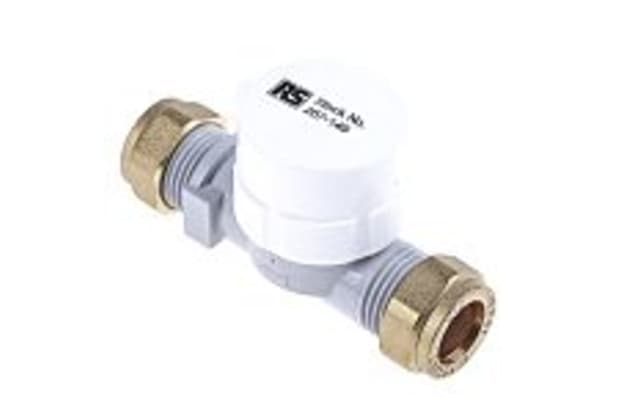- Published 23 May 2024
- Last Modified 23 May 2024
- 5 min
What is a Flow Meter?
Find out all about flow meters, the different types, and how they can be used.

Understanding Flow Meters
Discover the ins and outs of flow meters, their diverse types, and their practical applications.
A flow meter, also referred to as a flow indicator or meter, serves as an essential instrument for detecting changes in the flow direction of liquids, gases, or vapours. These devices continuously monitor the movement of substances over specific time intervals.
Selecting the appropriate flow meter hinges on considerations like the nature of the substance being monitored and the location of measurement. Opting for the right flow sensors tailored to specific applications ensures precise and dependable rate measurements. Therefore, prioritizing accuracy over factors like cost is crucial.
This article aims to elucidate the key criteria for choosing a flow meter, delineate the available types, and delve into their optimal utilization.
How Do Flow Meters Operate?

Diverse flow meters cater to various materials and application requirements. Depending on the type, a flow meter gauges either the volume or mass of the liquid, gas, or vapour passing through it, either continuously or at intervals.
The operation of a flow meter typically involves three primary components: the primary instrument, the transducer, and the transmitter. The substance being measured traverses through the transducer, which tracks its volume or mass per minute. Subsequently, the signals generated are interpreted by the transmitter to furnish the final flow measurement.
While this represents the conventional functionality of flow meters, different types may employ alternative methodologies and yield varied units of measurement. Some prevalent units for flow measurement encompass:
- Litres per second (l/s)
- Kilograms per second (kg/s)
- Actual cubic feet per minute (acfm)
- Cubic metres per hour (m³/h)
Unlock the potential of flow meters for your applications with a comprehensive understanding of their workings and capabilities.
Understanding Different Types of Flow Meters
The choice of a flow meter hinges on the substance to be tracked, necessitating monitoring of pressure, temperature, density, or viscosity. Moreover, adaptability to specific applications, such as pipe flow, turbine monitoring, or intricate gas and water systems, is imperative.
Paddlewheel Flow Sensors:
Also known as turbine flow meters, paddlewheel flow sensors find primary utility in liquid or water flow monitoring. Central to their design is a rotating paddlewheel immersed in the liquid. The rotation speed varies with the flow, detected either by the rotating shaft or magnetic chips within the paddles. These signals are relayed to a transmitter or controller, enabling precise flow measurement proportional to the speed of movement.
Variable Area Flow Meter:
Designed for measuring the flow of liquids or gases, variable area flow meters operate by discerning alterations in the instrument's internal area. Typically consisting of a tube housing a float or piston connected to a pipe system, these meters witness the upward movement of the float or piston as the fluid traverses through. Greater flow velocity results in a higher position of the float or piston, thereby increasing the space below it. Measurement of this area facilitates accurate calculation of the flow rate.
Magnetic Inductive Flow Sensor:
Also referred to as electromagnetic flow sensors, these devices induce a magnetic field through which the conducting liquid flows. Disruption of the magnetic field by the conducting liquid generates a voltage, in accordance with Faraday's Law of Electromagnetic Induction. This voltage variation is then utilized to ascertain the flow rate of the liquid passing through the sensor.
Applications of Flow Meters
Flow meters, depending on their type, facilitate measurement of mass, volume, linear, or non-linear flow of gases or liquids. Their utility spans various domains, including:
- Monitoring water or gas flow within pipe systems, such as drainage networks
- Managing waste flow in sewage infrastructure
- Regulating chemical or liquid flow across industrial facilities
- Monitoring natural gas distribution to residential or commercial premises
- Supervising oil, steam, chemical, or cooling water flow in industrial processes
Continuous monitoring or periodic flow rate assessments facilitated by flow meters aid in promptly identifying anomalies or inefficiencies within systems, enabling timely rectification and ensuring safety.
Selecting the most suitable flow meter for specific applications ensures accurate readings, enhancing operational efficiency and safety protocols.
Popular Brands
Related links
- Atrato, Pulsite Solo Rate & Totaliser Series LCD Display with Indicator for Use with Flow Meters
- Flow Sensors
- Trumeter Vista Touch Series Industrial Flow Meters Flow Meter
- Honeywell Flow Sensors
- Red Lion PAXLCL Indicators Current Meter for Flow Temperature, 49.5mm x 96.5mm
- Trumeter Digital Panel Multi-Function Meter for Flow Speed, 68mm x 68mm
- ifm electronic Clamp for Use with Flow Meters SMF
- Anemometers


